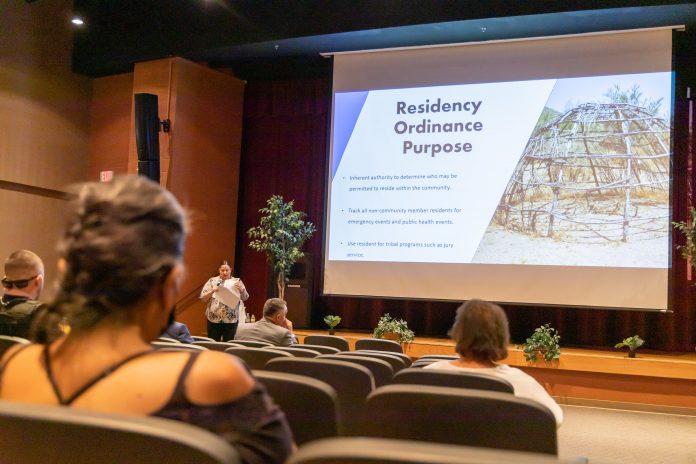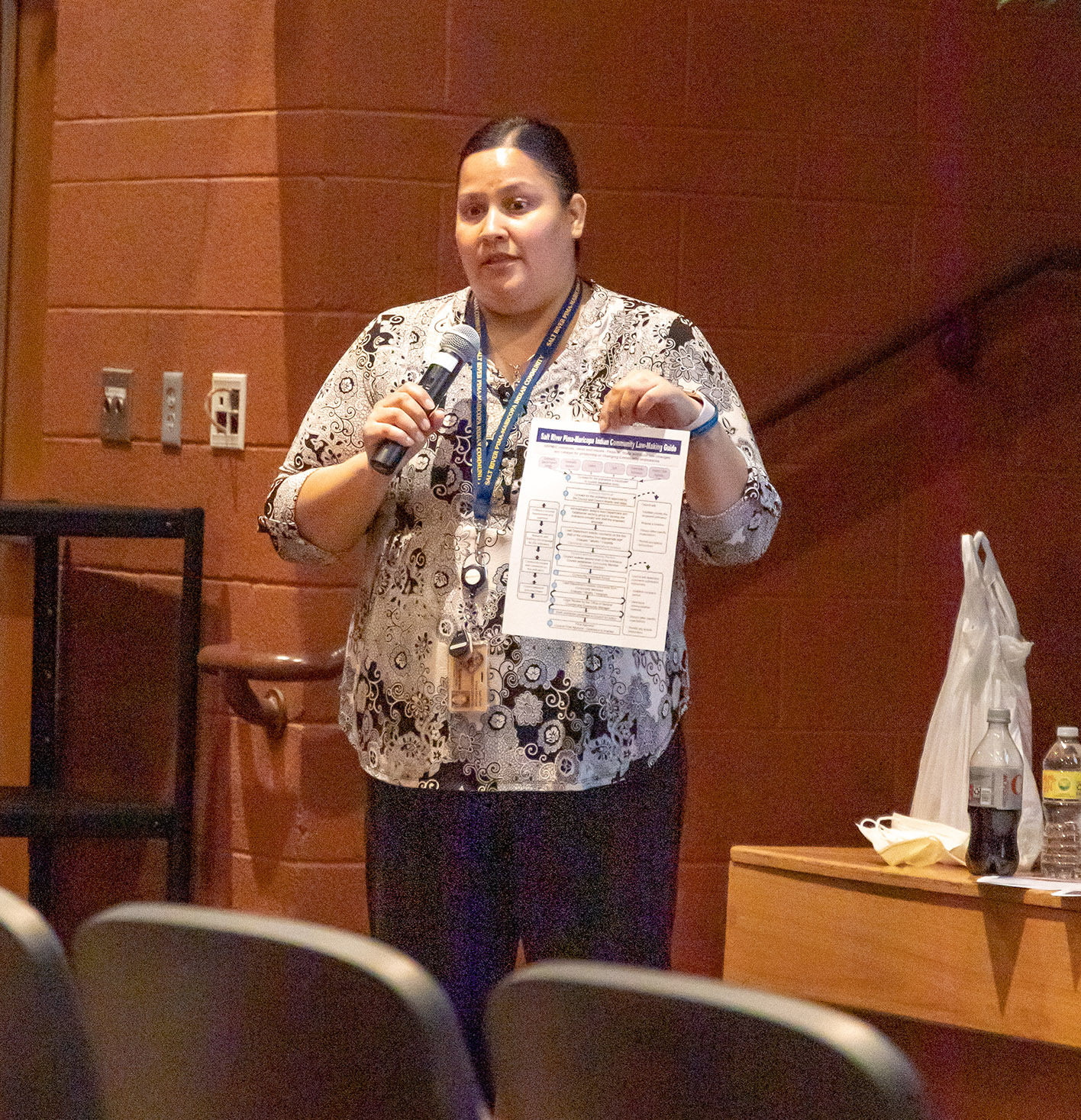
A draft ordinance is being distributed to Salt River Pima-Maricopa Indian Community members that may affect the residency status of non-members. The SRPMIC Office of General Counsel (OGC), with the assistance of the Community Development Department (CDD), have drafted a proposed residency ordinance for Community members to review and comment on by August 10.

The proposed ordinance is specifically directed toward how the SRPMIC will be able to identify and track non-members residing on the Community, including certain stipulations that non-members may be required to abide by.
Requirements such jury duty, violation of civil ordinances and even registering with SRPMIC will be taken into consideration. Assistant General Counsel Jeff Harmon said that even though the ordinance is directed more toward the Community’s terms of handling non-members, it also can play a role in public health scenarios, such as the COVID-19 pandemic.
“For public health reasons, such as vaccination clinics and things of that nature, and the overall health of the Community, it would be really nice to know who are [these] non-Community members living in Salt River,” said Harmon.
Harmon said those topics were some of the things that were being addressed by the Community Council in a series of discussions.
“What a residency ordinance does for a tribe in general is that it gives Council the ability to make the decision to decide who should be allowed to live in the Community when it comes to outside membership; it is an act of sovereignty to make that decision,” said Harmon.
Among the slew of reasons for a non-member draft residency ordinance are land issues, which tribal law enforcement and Community departments have dealt with in the past. Problems arise when a non-member creates a disturbance for nearby Community members, and because it is a non-member it creates a vacuum of sorts about how to address the concern.
Ensuring that non-members comply with Community ordinances is a major concern. “One of Council’s tasks [for] the CDD in January of last year was to start addressing some of the compliance issues throughout the Community, so we have been actively working to address different sites and determine [whether] we have the tools that we need to exercise certain ordinances,” said Assistant CDD Director Christi Andrews.
Andrews added that the goal of the residency ordinance, from the Community’s perspective, is to be more proactive in determining who is allowed to live within its boundaries. She said it will help the Community establish the way it wants to address a whole host of scenarios in which non-members are involved.
In developing its draft residency ordinance, the Community used the Gila River Indian Community as an example, as well as general discussion from SRPMIC members to get feedback. “It is meant to open up the discussion for the Community members and provide them the opportunity to offer their feedback and comments that can be incorporated into the residency ordinance,” said Andrews.
It should be noted that the proposed residency ordinance is not to be confused with how the tribal courts prosecute crimes against non-members. It is another aspect of how the SRPMIC enforces its sovereignty.
The based on the need for more dialog on the subject the draft residency ordinance, the comment peiod may be extended to collect more information from Community members.
During a District D meeting, hosted by Council member Wi-Bwa Grey on July 14, a presentation was given by Andrews and Harmon on the proposed ordinance.
At the meeting, Community members provided their comments on the ordinance.
The overall issue Community members were concerned with, was crime and the intimidation of non-members against tribal members. Some added, that there needs to be an ordinance in place to deter non-members from coming into the Community and creating an avenue for drug activity.
Others stated, that it will help address the problem of makeshift housing and the mess it creates on the Community.
You can read the full text of the proposed ordinance at www.srpmic-nsn.gov/government/ogc/proposed-ordinances/. Please submit your questions and comments to Jeff Harmon at jeff.harmon@srpmic-nsn.gov or (480) 362-5409 by August 10. All comments will be presented to Council at the end of the public comment period.













